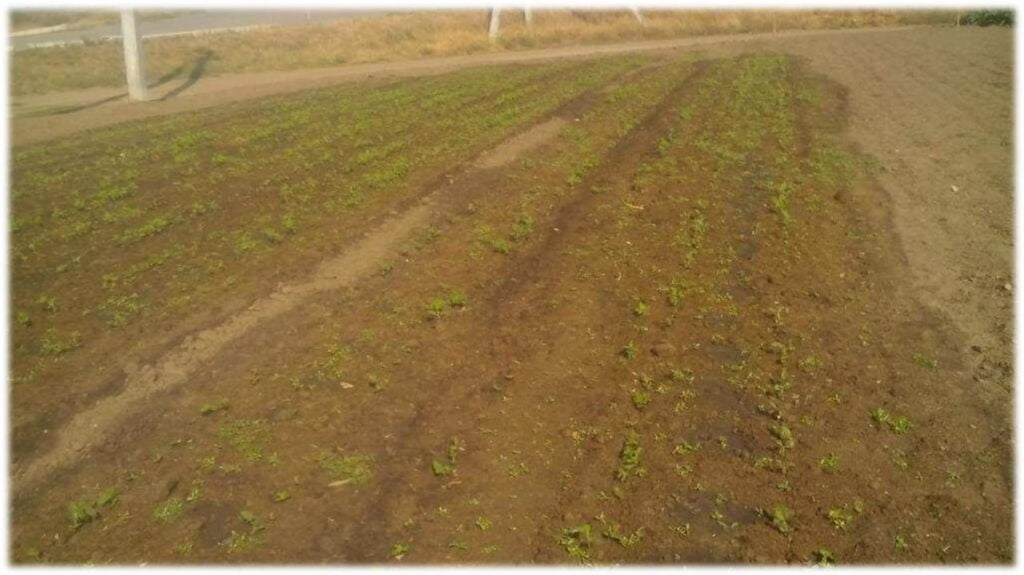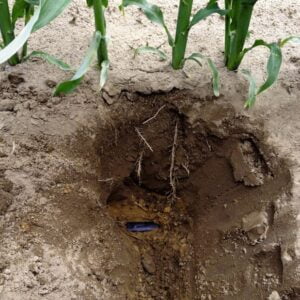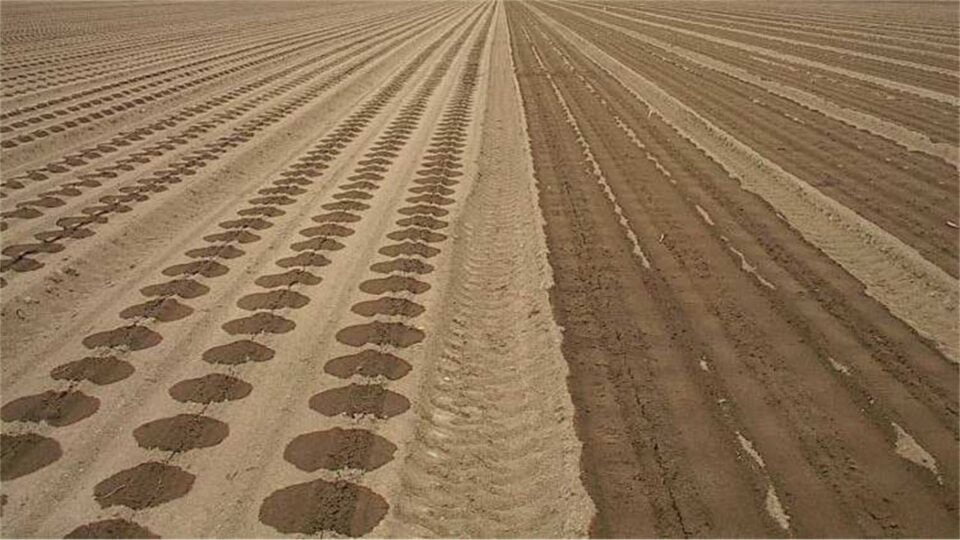At the conference “HortiTech: trends and opportunities for Uzbekistan” on May 23, experts will talk in detail about how underground or subsurface drip irrigation (SDI) in combination with pulse irrigation (PI) can impact the sustainability and profitability of growing vegetables and fruits in Uzbekistan.
However, I think that the SDI could be the game change for the whole agricultural sector of Uzbekistan and in this blog, I will speak about the opportunities it could provide beyond the fruit and vegetable sector.
What is underground or subsurface drip irrigation SDI? It is a technology of irrigation and fertigation, in which a special drip tube is placed under the soil and remains there for at least 10-15 years. In the US and many other countries, this technology has been known for a long time and recently it has received a new impetus thanks to the rapid development of technologies. By the way, in some fields in the USA, some SDI installations have been used for over 30 years without replacement and are still there.

What is pulse drip irrigation (PI)? Subsoil pulse drip irrigation (SPDI) is irrigation methods that maintains a constant optimum soil moisture in the root zone of the plant without blocking air access to the roots. Pulse drip irrigation is switched on for short periods of time and shows the best results in combination with soil moisture sensors and weather stations, which, by the way, we will also talk about in detail at the above mentioned conference.
PI can be placed underground and aboveground. However, it shows the greatest efficiency when used in combination with SDI.
The main advantages of both SDI and SPDI are:
– huge water savings;
– a sharp increase in crop yields;
– improved quality of produce, especially in the climate of Uzbekistan;
– huge savings of mineral fertilizers;
– huge savings in electricity used for irrigation pumps;
– savings in plant protection means;
– savings of labor used for irrigation maintenance and plant protection;
— savings of fuel and lubricants (due to fewer operations);
— reduction of negative impact on the environment, as fertilizers are not washed into groundwater and do not pollute the environment;
– with SIDI, the savings will be greater than with the normal SDI.
The main disadvantages of both SDI and SIDI are:
— relatively high investments at the first stage (although they pay off very quickly);
— high requirements for soil and land plot study and system planning;
— high requirements for water quality (although they are always high for any successful agricultural production);
— adaptation of growing technology to the specifics of the system;
— careful planning of crop rotation, if we are talking about annual crops;
— risk of damage by rodents;
— risk of root damage (easily solved).
How and why can the introduction of subsurface pulsed drip irrigation in Uzbekistan radically change the agribusiness of this country, and not just the fresh produce sector?
Uzbekistan is a protein-deficient country. Animal feed there is much more expensive than in most countries of the world. Every year, Uzbekistan spends about $250 million on imports of protein feed components, exporting none. Consequently, animals under underfed, which leads to low productivity and poor sustainability of animal husbandry.
High feed prices also affect the prices of animal proteins such as meat, eggs, and milk. For the country with relatively low per-capita incomes, expensive milk, eggs, and meat lead to an insufficient level of consumption of these essential products, which has a negative impact on the health of the population.
Another problem is rather high level of prices for vegetable oils. Uzbekistan annually spends more than half a billion US dollars on imports of vegetable oils and fats, naturally, without exporting them.
SDI could help to solve both problems. For example, the establishment of a high-quality milk production farm for 500 heads with a productivity of about 10 tons per cow per year, combined with the feed on SDI will require only about 300 hectares of land for complete self-sufficiency in protein, if we focus on corn and soybeans and will be extremely profitable!
With an increase of the land area in the area to 500 hectares, it is also possible to create feedlots for fattening bulls, which, with the professional approach, will allow one to get high quality beef economically. Yes, here I am simplifying a bit – development of modern beef production will require larger feedlots and more efficient slaughtering but that’s a different subject.
Similarly, poultry meat and egg farms can use SDI to create vertically integrated businesses that grows its own feed at cost that would be comparable to Ukraine or less! The same business could create oilseed crushing facilities, sell vegetable oils for additional income and use oilmeals for feed. By the way, this technology is also perfect for growing other oilseeds, such as sunflowers, which, under the conditions of Uzbekistan and SDI, could assure higher yields than Ukraine!
The creation of such companies will also stimulate the development of oilseed crushing industry, making soybean meal and sunflower meal the main feed components in the country. At the same time, soybean and sunflower oils will become an excellent substitute for expensive imported vegetable oils, dramatically improving the country’s trade balance.
In the meanwhile, increased production of milk, meat and eggs in Uzbekistan will reduce their domestic prices, boost consumption and will have a positive impact on the health of the country’s population. It will also improve the country’s trade balance, improve food security, and have a positive impact on the environment, as use of mineral fertilizers and crop protection chemicals will also be reduced.
And now about the most acute problem of agriculture in Uzbekistan – water resources. Personally, my heart bleeds when I see furrow irrigation in a country where summer temperatures exceed 40 degrees Celsius and relative humidity is 20-30%! At the same time, I see how the farmers of Uzbekistan pump out gold reserves of artesian water for irrigation of crops from depths of 200 meters or more.
When using underground subsurface drip irrigation (SDI), especially in combination with pulse irrigation (PI), the savings of Uzbekistan’s water resources will be simply colossal! This will significantly expand the area of agricultural land in the country, without the need to pump water from artesian wells! Therefore, PKO is not only a smart investment for a smart investor, but also an excellent solution to many problems for those who make decisions about the future of the country.

Of course, I must also mention how the SDI can impact the fruit and vegetable business in Uzbekistan.
What is the main problem horticultural growers and traders in Uzbekistan? Many will disagree with me, but I have been to all regions of the country, I have seen produce and technologies, I have talked with buyers and sellers, and I am sure that the main problem of Uzbekistan is the quality of fruits and vegetables.
SDI and SIDI will help resolve many problems of inadequate quality of fruits and vegetables in Uzbekistan. Certainly, not by itself – farmers will have to also improve variety selection and other aspects of fruit and vegetable growing and handling technologies, but SDI could still be a gamechanger here.
Let me give you a practical example. Cherries are the pride of Uzbekistan. However, having access to the most attractive market for cherries in the world, which is China, and growing more than 150 thousand tons of cherries a year, Uzbekistan sells no more than 200 tons of cherries to China. Why so little? The answer is simple – quality, and, above all, the size of cherries in Uzbekistan is insufficient to match the Chinese requirements.
Almost all companies I visited in the country have a huge problem inadequate water supply capacity on cherry plantations during the pick period, when water is needed to build the yield and size of the fruits. SDI will help remove this problem! By the way, subsoil drip irrigation systems can be installed even in already existing orchards.
If you want to learn more about SDI and SIDI and other breakthrough technologies for the fruit and vegetable business, I strongly advise you to register for the conference “HortiTech: trends and opportunities for Uzbekistan” and listen to the presentation of Sergiy Alba, a person with vast practical experience in installing such systems. The registration form is available at this link.
The use of the site materials is free if there is a direct and open for search engines hyperlink to a specific publication of the East-Fruit.com website.




